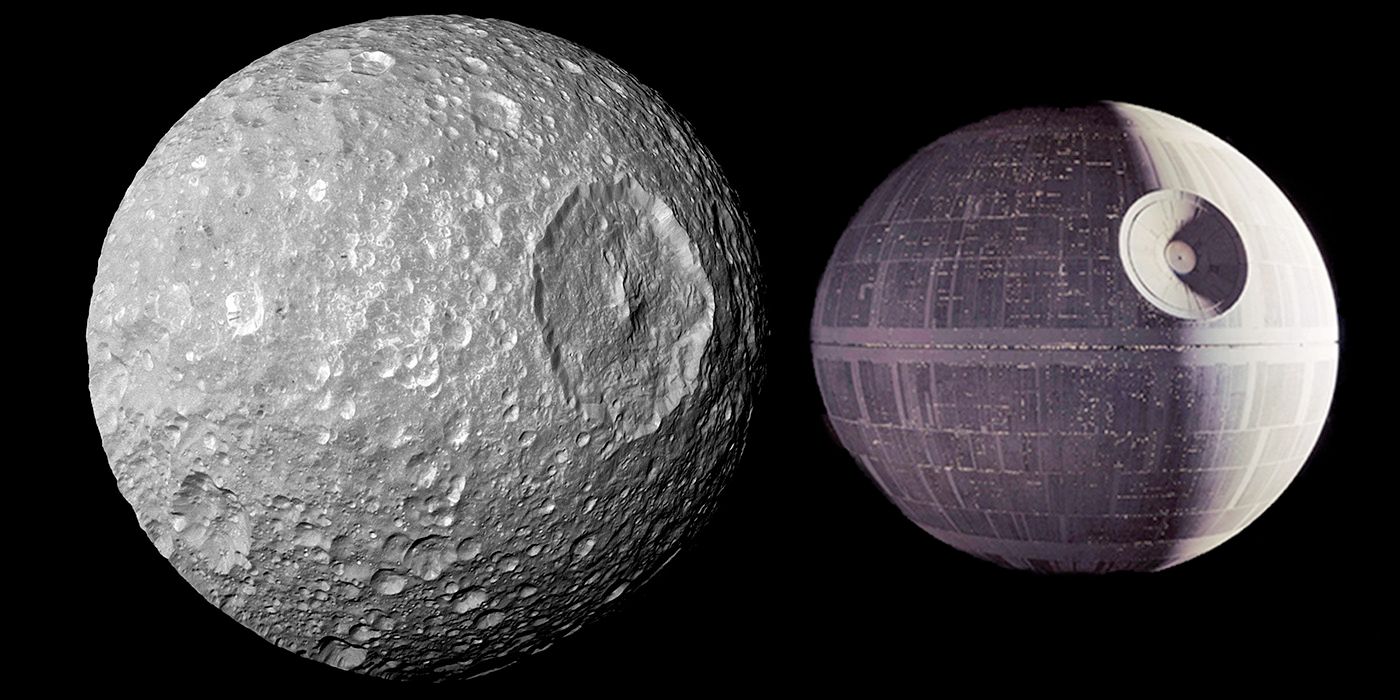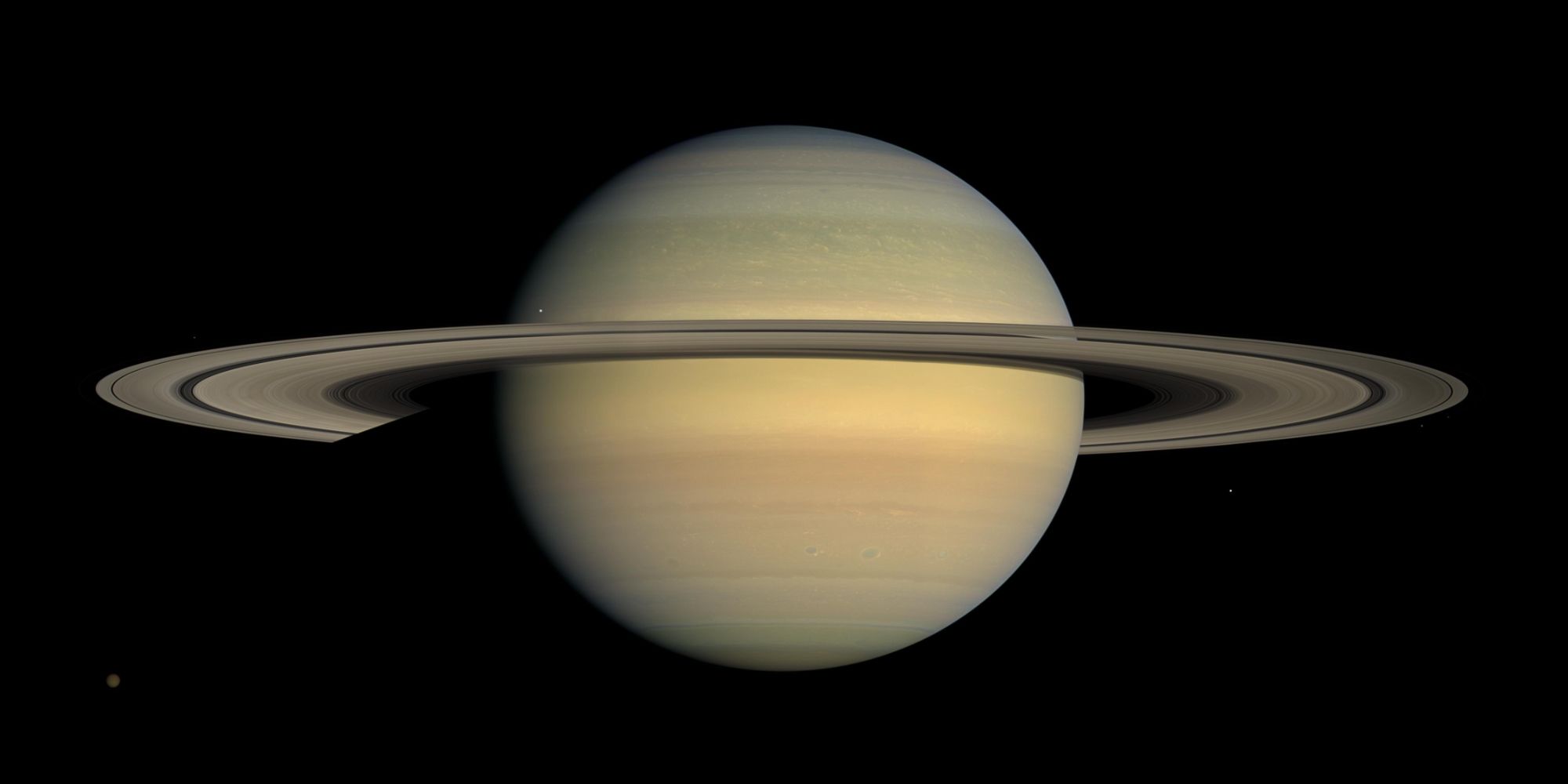A moon of Saturn, which happens to look a whole lot like the Death Star, could be hiding a subsurface ocean, according to new research. Saturn may be the most iconic of all the planets, with its bold rings revealing its identity even at a quick glance, but there is still much we don't know about the planet. A gas giant, Saturn's surface isn't visible to us, and the planet is almost entirely made up of gas, much like Jupiter.
What Saturn lacks in a gaze-worth surface is more than made up for by the things that surround the planet. Its massive rings of dust and debris are only one part of that story, as the planet boasts a staggering 82 moons. Fifty-three of those moons have been confirmed and named, while a further 29 are awaiting confirmation and naming on an official basis. One of those moons, Mimas, looks like a dead ringer for the Death Star of Star Wars lore, and it may be hiding a secret.
New research conducted by scientists a the Southwest Research Institute has revealed that Mimas may actually not be the frozen chunk of space stuff that it was long thought to be. The Cassini probe, which circled Saturn for years before performing a series of daring dives through its rings, collecting data along the way, noticed something peculiar about Mimas. It seemed as though the moon was oscillating as it rotated, which wouldn't be expected if the moon was frozen solid. So, what could it be? A vast internal structure manned by evil space fascists? No, but a subsurface ocean is still a possibility.
That's No Moo- Oh, Wait, Yes It Is
Though Cassini is now long dead, the data it returned is still being mined for valuable insights. For Mimas, that means the detection of what could be classified as a "stealth" ocean, or one that isn't obvious from the exterior. There are a number of reasons why such an ocean might form, and there are examples of subsurface oceans hiding within other moons as well, including Saturn's own Enceladus. Tidal forces that push and pull on an object while in orbit can impart enough energy that it actually prevents liquid inside of a moon from solidifying. In the case of Enceladus, that liquid is thought to be water, and Mimas could hold the same treasure within.
"Because the surface of Mimas is heavily cratered, we thought it was just a frozen block of ice," Dr. Alyssa Rhoden of the Southwest Research Institute said. "Turns out, Mimas' surface was tricking us, and our new understanding has greatly expanded the definition of a potentially habitable world in our solar system and beyond." If Mimas is indeed hiding an ocean, is there anything inside? We don't yet know, but with missions to ocean moons already being conceptualized, it may not be long before we find out.
Source: Southwest Research Institute


